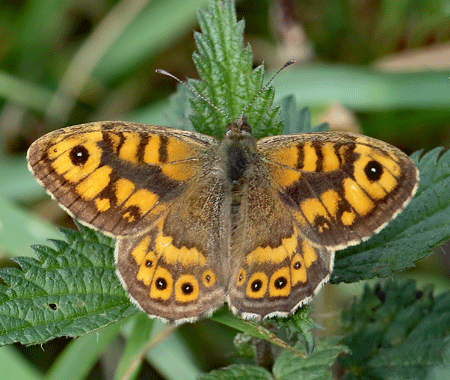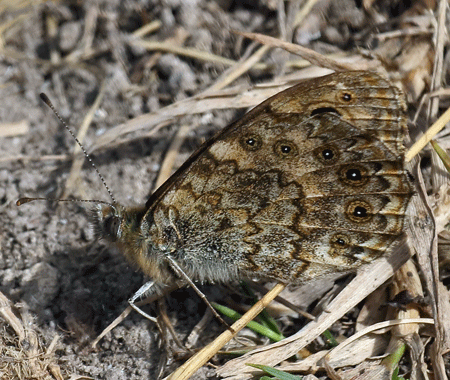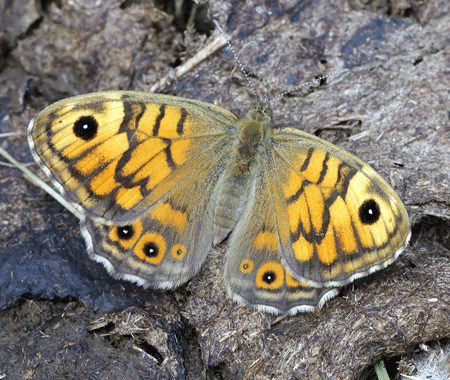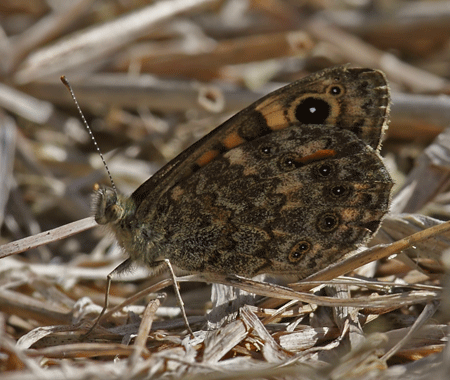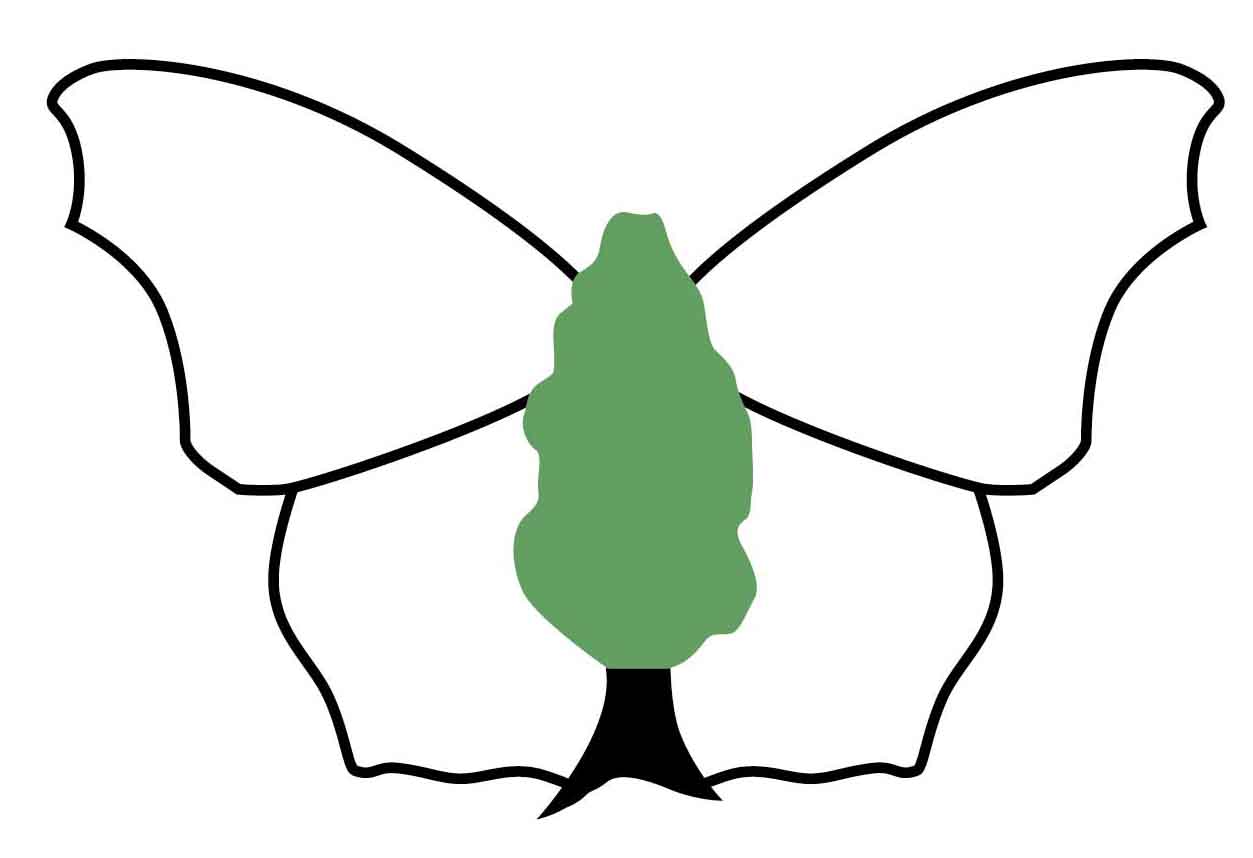 | Butterfly Conservation Saving butterflies, moths and our environment | Upper Thames Branch | 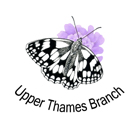 |
Wall Brown (Lasiommata megera) | ||||||||||||||||||||||
| Description | ||||||||||||||||||||||
| Wing span: 44-52 mm. The Wall Brown gets its name from its characteristic behaviour of resting with its wings two-thirds open on any bare surface. It was once found throughout England and Wales, but over the last few decades it has suffered a severe decline, and has almost disappeared from the Upper Thames region. It is found primarily in coastal areas, especially in unimproved grassland, wasteland, cliff edges and hedgerows. In some areas it manages to penetrate inland. | ||||||||||||||||||||||
| Images (click to enlarge) | ||||||||||||||||||||||
| ||||||||||||||||||||||
| Life Cycle | ||||||||||||||||||||||
| There are two broods per year. The first appears around the first week of May, peaking towards the end of the month. The second brood emerges in early August. The larva is the over-wintering stage. | ||||||||||||||||||||||
| Larval Foodplants | ||||||||||||||||||||||
| The primary larval foodplants are various Bents (Agrostis spp.), Cock's-foot (Dactylis glomerata), False Brome (Brachypodium sylvaticum), Tor-grass (Brachypodium pinnatum), Wavy Hair-grass (Deschampsia flexuosa) and Yorkshire-fog (Holcus lanatus ). | ||||||||||||||||||||||
| Nectar Sources | ||||||||||||||||||||||
| Adults feed on Daisy, Fleabane, Hawkweeds, Knapweeds, Marjoram, Ragged Robin, Ragwort, Thistles, Water Mint and Yarrow. | ||||||||||||||||||||||
| UK Conservation Status | ||||||||||||||||||||||
| Endangered | ||||||||||||||||||||||
| Earliest UTB first sighting (since 2004) : 3rd May | ||||||||||||||||||||||
| Mean UTB first sighting (since 2004) : 6th June | ||||||||||||||||||||||
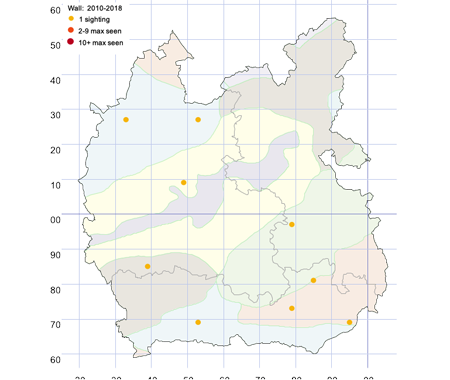 Key |
| |||||||||||||||||||||
| Related Species | ||||||||||||||||||||||
| ||||||||||||||||||||||
Copyright © Butterfly Conservation Upper Thames Branch 2025
Privacy and Copyright Statement
Butterfly Conservation : Company limited by guarantee, registered in England (2206468)
Registered Office: Manor Yard, East Lulworth, Wareham, Dorset, BH20 5QP, Tel: 01929 400 209
Charity registered in England & Wales (254937) and in Scotland (SCO39268)
Privacy and Copyright Statement
Butterfly Conservation : Company limited by guarantee, registered in England (2206468)
Registered Office: Manor Yard, East Lulworth, Wareham, Dorset, BH20 5QP, Tel: 01929 400 209
Charity registered in England & Wales (254937) and in Scotland (SCO39268)

